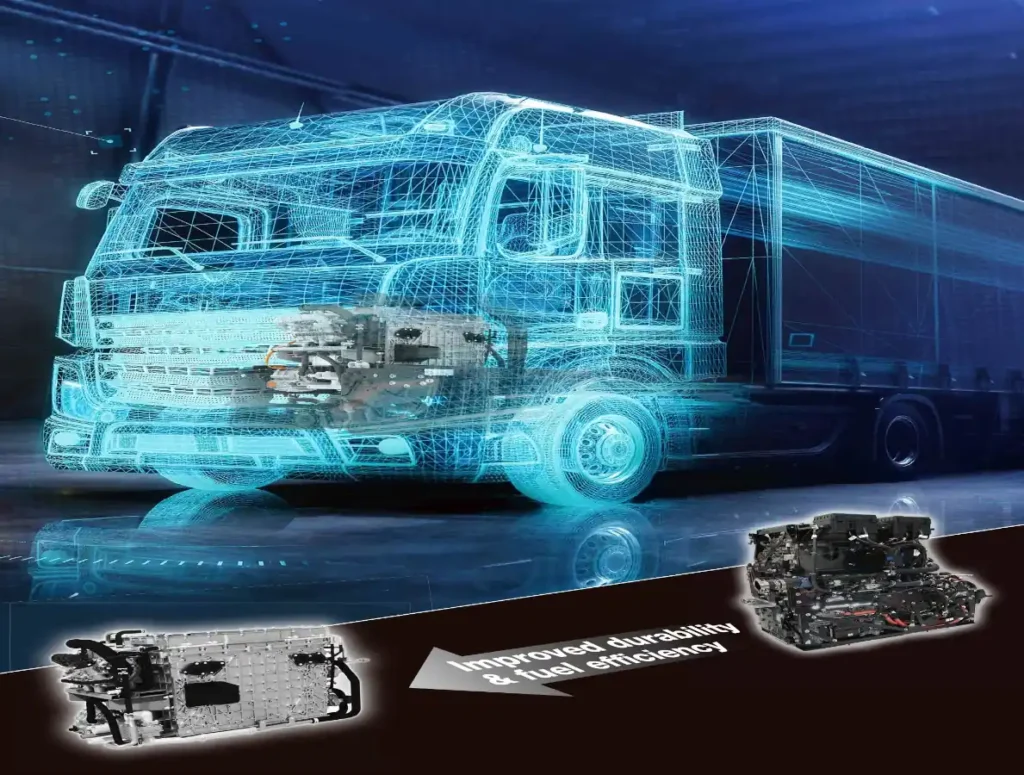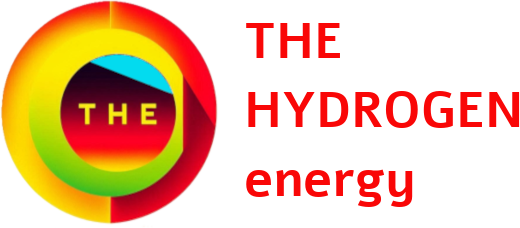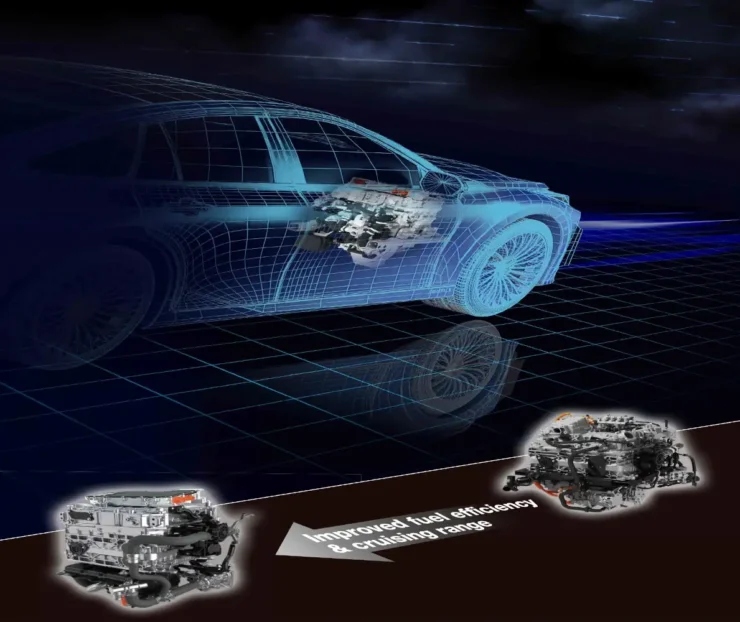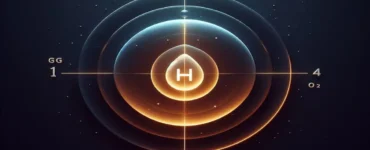Toyota Hydrogen Fuel Cell System (HFC) Advancements and Breakthroughs: Toyota’s 3rd Generation Hydrogen Fuel Cell System: An Expert Analysis
Toyota has been a consistent and pioneering force in fuel cell technology, arguably leading the automotive sector with their Mirai Fuel Cell Vehicle (FCEV). Toyota has established itself as a leader in hydrogen fuel cell technology, and its latest innovation, the third-generation hydrogen fuel cell (3rd Gen FC) system, represents a significant leap forward in the quest for sustainable energy solutions and a clear commitment to hydrogen as a viable clean energy fuel, especially for transportation and beyond.
This article on Toyota Hydrogen Fuel Cell provides a detailed explanation of the 3rd Gen FC system, incorporating the latest insights from Toyota’s recent announcement and highlighting its technical specifications, innovations, performance metrics, and implications for the future of hydrogen mobility.
Toyota Hydrogen Fuel Cell System: Key Objectives and Improvements of the 3rd Gen System:
The primary goals for this Toyota Hydrogen Fuel Cell – 3rd generation system seem to be focused on:
- Significant Cost Reduction: Could be up to 50% reduction in system cost compared to the 2nd generation system used in the current Mirai. This is a massive leap and arguably the most critical factor for wider fuel cell adoption.
- Enhanced Performance and Efficiency: Improvements in power output, efficiency, and driving range are targeted. Toyota highlights a 20% increase in driving range for the Mirai when equipped with the new system (compared to the previous generation Mirai). They also mention a 37% improvement in output density (per unit volume and mass).
- Compactness and Weight Reduction: The improved output density inherently implies a smaller and lighter system for the same power output. This is crucial for vehicle integration and broader applications.
- Increased Durability and Reliability: While not explicitly quantified in the press release, advancements in materials and design are likely aimed at extending the lifespan and improving the reliability of the fuel cell system under various operating conditions.
- Versatility and Scalability for Diverse Applications: Toyota emphasizes that this 3rd generation system is designed to be more modular and adaptable for use beyond passenger vehicles, including commercial vehicles (trucks, buses), trains, ships, and even stationary power applications.
Toyota Hydrogen Fuel Cell – 3rd Gen: Refined Performance Metrics
While Toyota has not released detailed performance metrics for its third-generation fuel cell system, the following estimates are based on industry trends, Toyota’s past advancements, and publicly available targets.
| Metric | 2nd Gen System | 3rd Gen System (Estimate) | Improvement (%) |
|---|---|---|---|
| Efficiency (tank-to-wheel) | ~60% | ~65-70% | +10-15% |
| Cost (per kW) | ~$100/kW | ~$50/kW | -50% |
| Power Density | ~3.1 kW/L | ~3.7-4.0 kW/L | +20-30% |
| Lifespan (automotive) | ~5,000 hours | ~6,000 hours | +20% |
| Cold-Start Capability | -30°C | -40°C or lower | +30% |
| Range (passenger vehicle) | ~650 km | ~750-800 km | +15-20% |
1. Efficiency Improvement:
- Estimate: >= 10% increase in efficiency compared to the Toyota Hydrogen Fuel Cell second-generation system.
- Second-Generation Efficiency: ~60% (tank-to-wheel).
- Third-Generation Efficiency: > 65 % (tank-to-wheel).
- Reason: Advances in stack design, thermal management, and hydrogen utilization.
2. Cost Reduction:
- Estimate:~50% reduction in cost compared to the second-generation system.
- Second-Generation Cost: ~$100/kW (estimated).
- Third-Generation Cost: ~$50/kW (aligned with U.S. DOE 2025 target).
- Reason: Reduced platinum loading, economies of scale, and material innovations.
- Context: Toyota has been working to reduce costs through material innovations (e.g., reduced platinum loading) and economies of scale. The DOE target is a widely recognized benchmark for the industry. While Toyota has not explicitly stated any percentage reduction target, these efforts suggest a strong focus on cost reduction.
3. Power Density Improvement:
- Estimate:~20-30% increase in power density compared to the second-generation system.
- Second-Generation Power Density: ~3.1 kW/L (estimated for Mirai 2020).
- Third-Generation Power Density: ~3.7-4.0 kW/L (projected).
- Reason: Compact stack design and advanced materials.
4. Durability Improvement:
- Estimate:~20% increase in lifespan compared to the second-generation system.
- Second-Generation Lifespan: ~5,000 hours (for automotive applications).
- Third-Generation Lifespan: ~6,000 hours (projected).
- Reason: Enhanced membrane and catalyst durability.
5. Cold-Start Performance:
- Estimate:~30% improvement in cold-start capability compared to the second-generation system.
- Second-Generation Cold-Start: Operates at -30°C.
- Third-Generation Cold-Start: Expected to operate at -40°C or lower.
- Reason: Improved thermal management and materials.
6. Range / Mileage Improvement:
- Estimate:~15-20% increase in mileage / range compared to the second-generation system.
- Second-Generation Range: ~650 km (404 miles) for the Mirai 2020.
- Third-Generation Range: ~750-800 km (466-497 miles) (projected).
- Reason: Higher hydrogen storage capacity and system efficiency.
7. Power Output:
- Estimate: >150 kW (for heavy-duty applications like trucks and buses).
- Context: Toyota’s second-generation FC system in the 2020 Mirai produces 128 kW. A third-generation system would likely aim for higher power output to support heavier vehicles and broader applications.

Toyota Hydrogen Fuel Cell: Likely Innovations and Data Points
While Toyota’s press release is at high-level, we can only infer and extrapolate the likely technical innovations and data points that contribute to these improvements.
1. Fuel Cell Stack Technology:
- Membrane Electrode Assembly (MEA) Advancements:
- Catalyst Optimization: Platinum (Pt) is the primary catalyst in PEM fuel cells. Cost reduction likely involves significant advancements in platinum utilization. This could include:
- Reduced Platinum Loading: Using less platinum per unit area of the electrode while maintaining or improving performance. This is a major research area in fuel cell catalysis.
- Improved Catalyst Activity: Developing catalysts with higher intrinsic activity, meaning they are more efficient at facilitating the electrochemical reactions (oxygen reduction reaction – ORR, and hydrogen oxidation reaction – HOR). This could involve new catalyst materials, improved catalyst particle size and distribution, or optimized catalyst support materials.
- Novel Catalyst Materials (Potential but less likely in short term): Research is ongoing into non-platinum catalysts (e.g., based on transition metals or even metal-free catalysts). While promising, large-scale implementation in a 3rd generation system might be less likely, but future iterations could certainly incorporate such breakthroughs.
- Proton Exchange Membrane (PEM) Enhancements:
- Improved Conductivity: Developing membranes with higher proton conductivity, especially at lower humidity and higher temperatures, reduces internal resistance and increases efficiency.
- Enhanced Durability: PEMs are a critical component and prone to degradation over time. Improvements in membrane materials and reinforcement strategies likely contribute to extended lifespan and better performance retention. This could involve new polymer materials, crosslinking, or reinforcement with nanofillers.
- Reduced Cost Materials: Exploring lower-cost membrane materials without sacrificing performance or durability is also a key focus.
- Electrode Layer Optimization (Gas Diffusion Layer – GDL & Catalyst Layer – CL):
- Improved Mass Transport: Optimizing the porous structure of GDLs and CLs to facilitate better transport of reactant gases (hydrogen and air/oxygen) to the catalyst sites and removal of product water. This directly impacts performance, especially at high current densities.
- Water Management: Fuel cells produce water as a byproduct. Efficient water management within the stack is crucial to prevent flooding (excess water hindering gas transport) or drying out (membrane dehydration reducing conductivity). Advanced GDL and CL designs and materials contribute to better water management.
- Catalyst Optimization: Platinum (Pt) is the primary catalyst in PEM fuel cells. Cost reduction likely involves significant advancements in platinum utilization. This could include:
- Bipolar Plate Design and Materials:
- Cost-Effective Materials: Bipolar plates are a significant component by weight and cost in a fuel cell stack. Moving from expensive materials like graphite to more cost-effective materials like stamped metal (stainless steel, titanium alloys) is a key strategy for cost reduction. Toyota has likely further optimized metal bipolar plate technology.
- Flow Field Optimization: Bipolar plates contain flow channels that distribute reactant gases across the MEA surface. Optimizing the flow field design ensures uniform gas distribution and efficient removal of product water, improving stack performance and efficiency. Advanced computational fluid dynamics (CFD) simulations are crucial in this optimization process.
- Reduced Stack Size and Weight: Optimized bipolar plate design can also contribute to a more compact and lighter stack. Thinner bipolar plates, efficient flow field designs, and integrated cooling features all play a role.
2. Balance of Plant (BOP) System Improvements:
- Air Compressor: The air compressor is an important load in a fuel cell system, consuming significant power. Improvements likely focus on:
- Higher Efficiency Compressors: Developing more efficient compressor designs (e.g., advanced impeller designs, magnetic bearings to reduce friction) to minimize power consumption.
- Integrated and Compact Design: Integrating the compressor more closely with the fuel cell stack and other BOP components to reduce overall system size and weight.
- Humidification System: PEM fuel cells require proper humidification to maintain membrane conductivity. Simpler and more efficient humidification strategies could include:
- Self-Humidifying Membranes (partially): While fully self-humidifying membranes are still a research goal, some advancements in membrane materials might reduce the need for complex external humidification.
- Simplified Humidifier Designs: Developing more compact and efficient humidifier components (e.g., enthalpy wheels, membrane humidifiers) to reduce size, weight, and cost.
- Cooling System: Effective thermal management is critical for fuel cell performance and durability. Improvements likely include:
- More Efficient Heat Exchangers: Compact and highly effective heat exchangers to dissipate waste heat.
- Optimized Cooling Strategies: Advanced cooling strategies and control systems to maintain the stack temperature within the optimal operating range under varying load conditions.
- Power Control Unit (PCU): The PCU manages the power flow in the fuel cell system, converting DC power from the stack to AC or DC power needed by the vehicle or application. Improvements likely focus on:
- Higher Efficiency Power Electronics: Using advanced power semiconductor devices (e.g., SiC or GaN based devices) and optimized power electronic topologies to improve PCU efficiency and reduce losses.
- Integrated and Compact Design: Integrating the PCU with other BOP components for a more compact and lighter overall system.
3. Toyota Hydrogen Fuel Cell – System Integration and Control:
- Modular Design: Toyota emphasizes a more modular design. This likely means the 3rd generation system is built from standardized modules that can be configured and scaled for different power requirements and applications. This modularity aids in:
- Manufacturing Scalability: Easier to mass-produce standardized modules.
- Application Versatility: Modules can be combined to create systems of different power levels for various vehicles and stationary applications.
- Cost Reduction through Standardization: Economies of scale are achieved through mass production of standardized components.
- Advanced Control Systems: Sophisticated control algorithms and sensors are crucial for optimizing fuel cell system performance, efficiency, and durability under dynamic operating conditions. This includes:
- Real-time Optimization: Adjusting operating parameters (e.g., air flow, hydrogen flow, stack temperature, humidity) based on real-time conditions and load demands to maximize efficiency and performance.
- Predictive Maintenance and Diagnostics: Advanced sensors and data analytics can be used to monitor system health, predict potential issues, and enable proactive maintenance, enhancing reliability and lifespan.
Data Points and Quantifiable Improvements: Toyota Hydrogen Fuel Cell
- Major Cost Reduction: This is the most impactful data point. Achieving high level of cost reduction is a major breakthrough and will significantly improve the competitiveness of fuel cell vehicles and systems.
- 20% Increased Driving Range (Mirai): This improvement is substantial and directly addresses a key consumer concern about FCEVs – range anxiety. It likely comes from a combination of improved fuel cell efficiency and potentially optimized hydrogen storage or vehicle aerodynamics.
- 37% Improved Output Density: This is a significant increase in power output per unit volume and mass. It directly translates to smaller, lighter, and more power-dense fuel cell systems, making them more attractive for vehicle integration and diverse applications.
Toyota Hydrogen Fuel Cell: Broader Implications and Market Impact
Toyota’s 3rd generation hydrogen fuel cell system has significant implications for the hydrogen energy landscape:
- Accelerating FCEV Adoption: Lower costs and improved performance are critical to making FCEVs more competitive with Battery Electric Vehicles (BEVs) and Internal Combustion Engine Vehicles (ICEVs). This system could significantly accelerate the adoption of FCEVs, particularly in segments where range, refueling time, and payload capacity are crucial (e.g., heavy-duty trucking, long-haul transport).
- Expanding Applications Beyond Automotive: The modular and scalable design, coupled with cost reduction, opens up a wider range of applications for Toyota’s fuel cell technology beyond passenger cars. This includes commercial vehicles, stationary power, maritime, and potentially even aviation in the future.
- Driving Hydrogen Infrastructure Development: As FCEV adoption increases (even incrementally), it will create more demand for hydrogen fuel and incentivize the development of hydrogen production, distribution, and refueling infrastructure. This is a crucial positive feedback loop for the hydrogen economy.
- Strengthening Toyota’s Leadership: This 3rd generation system reinforces Toyota’s position as a technology leader in fuel cell technology and a major proponent of hydrogen as a key energy carrier for a sustainable future.
Future research and development
- Further Cost Reduction: Meeting the US DOE 2030 Target, Continuing to drive down costs through material innovation, manufacturing process optimization, and economies of scale.
- Increased Power Density and Efficiency: Pushing the boundaries of fuel cell stack performance and efficiency to further enhance vehicle performance and range.
- Improved Durability and Lifespan: Extending the operational lifespan and reliability of fuel cell systems to match or exceed conventional powertrains.
- Advanced Hydrogen Storage: Developing more compact, lightweight, and cost-effective hydrogen storage solutions to improve vehicle packaging and range.
- Expansion into New Applications: Actively exploring and developing fuel cell solutions for a wider range of applications beyond automotive, leveraging the modularity and scalability of Toyota Hydrogen Fuel Cell systems
Toyota Hydrogen Fuel Cell System – 3rd Generation Conclusion:
Toyota’s 3rd Generation Hydrogen Fuel Cell system represents a significant leap forward in fuel cell technology. The cost reduction, coupled with performance and efficiency enhancements, is a major achievement that could be a pivotal moment for the hydrogen fuel cell industry. While challenges related to cost, infrastructure, and green hydrogen production persist, Toyota’s commitment and technological progress, as exemplified by this 3rd generation system, are crucial for realizing the potential of hydrogen as a key enabler of a sustainable energy future, particularly in transportation and beyond. This Toyota Hydrogen Fuel Cell system demonstrates that fuel cell technology is maturing rapidly and becoming increasingly competitive, poised to play a more prominent role in the global energy transition.
(Note: This Toyota Hydrogen Fuel Cell 3rd Gen, analysis is based on on what we know on understanding of fuel cell technology and the information available from Toyota’s press releases. Deeper technical specifications and independent performance validation will become clearer as Toyota releases more detailed information and as the system is deployed in real-world applications.)
Source: https://global.toyota/en/newsroom/corporate/42218558.html
This content is protected by copyright and cannot be reused without permission. For collaboration inquiries or to request content usage rights, please get in touch with us: info@thehydrogen.energy







Add comment